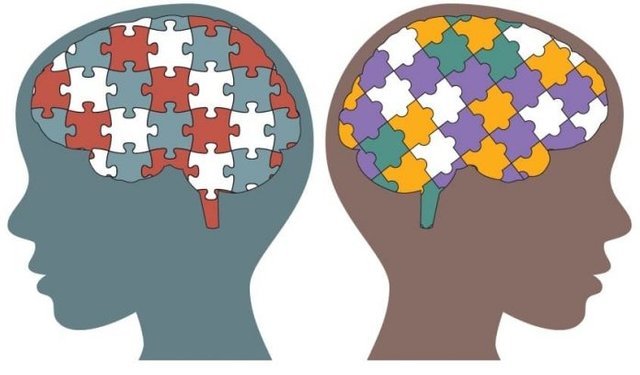The shape of the cerebellum may be linked to autism
This part of the brain is key to the development of personality in the first years of life

A team of neurobiologists and psychiatrists at the Irving Medical Center at Columbia University (United States) has discovered that certain structures peculiar to the cerebellum may be related to different disorders of the autism spectrum (ASD). This ailment causes problems of communication and interaction, and leads to the development of repetitive and limited patterns of behavior. Its symptoms usually appear in the first two years of life. Since they are numerous and present in different degrees in each individual, specialists prefer to avoid the use of the term "autism" to encompass them, and choose to use the autism spectrum disorders.
The cerebellum, a mass of nervous tissue located in the back of the brain, processes information from other regions of the brain, sensory receptors and the spinal cord. Its objective: to manage the balance and movements of the musculoskeletal system. But it seems that their functions go beyond. Recent research indicates that participates in the cognitive function and implicit learning, which allows us to find out the social norms although they are not explicit. They are two key aspects in the development of a personality without the communication and relationship problems typical of autistics.
The cerebellum, little great unknown
So far, studies devoted to autism based on neuroimaging techniques obviated the cerebellum, which is a big mistake, according to Kristina Denisova, part of the team responsible for the study. This psychiatrist explains that the cerebellum constitutes only 10 percent of the volume of the brain, but contains 80 percent of its neurons: "Imagine watching only 20 percent of brain neurons and build a theory of atypical personality development from such limited knowledge ".
To examine the cerebellum, scientists at Columbia University applied 3D fractal analysis techniques to images obtained by magnetic resonance imaging. Without going into complicated explanations: this method allowed us to calculate the fractal dimension (a measure of structural complexity) of the outer layer of the cerebellum of 20 autistic children between six and twelve years of age, and compare it with that of kids without this disorder.
They found that autistic children had a significantly smaller fractal dimension in the right cortex of the cerebellum than the others, implying that the surface of that area was flatter than normal. Since that part of the cerebellum is involved in language processing, the finding suggests that a flatter surface of this structure could be linked to the communication difficulties characteristic of autism spectrum disorders.
Previous research had already found some connection between the anatomy of the cerebellum and some symptoms of autism, but the evidence was not strong. Those who contribute this work are stronger. For example, has found that autistic children with a structure of the cerebellum more like the normal have greater communication skills than usual in those who suffer from this disorder.
This study is another step in the knowledge of a disease still full of mysteries for science, and that affects about 1 in every 100 born in Europe, according to epidemiological studies cited by the Autism Confederation Spain.
Congratulations @yhosma! You received a personal award!
Click here to view your Board of Honor
Do not miss the last post from @steemitboard:
Downvoting a post can decrease pending rewards and make it less visible. Common reasons:
Submit
Congratulations @yhosma! You received a personal award!
You can view your badges on your Steem Board and compare to others on the Steem Ranking
Vote for @Steemitboard as a witness to get one more award and increased upvotes!
Downvoting a post can decrease pending rewards and make it less visible. Common reasons:
Submit